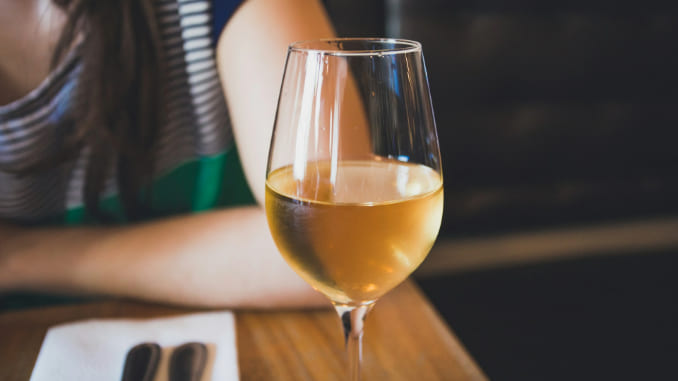Why Whites Are On The Rise In Oregon’s Rising Rocks District
Jp Valery/Unsplash
If you’ve heard of the beloved by under-the-radar Rocks District in northeastern Oregon, it’s probably for their reds. This tiny but increasingly mighty AVA in Oregon has been producing what wine geeks and critics consider to be some of the “most distinctive” and the “greatest wines in America,” the vast majority of which involve red Rhône grapes like Syrah and Grenache. It is the only Oregon AVA thus far to produce a perfect 100-point wine.
But increasingly, vintners are producing showstopping Viogniers and blends from white Rhone grapes like Picpoul, Bourbelance, Clairette, Grenache Blanc and Roussanne.
It’s both a matter of terroir—and taste.
The History and Terroir of the Rocks District
The Rocks District was first planted in 1997 by Christophe Baron, a French native from the village of Charly-sur-Marne in Champagne. A vintner by training and trade, he visited friends in the region in the 1990s and was arrested by the rocky soil, which reminded him of the Châteauneuf–du–Pape, the Northern Rhône region famous for its distinct wines grown in rocky soils.
While others saw what became the Rocks District as terroir suitable for orchard fruit, Baron saw the potential for great wine that truly imparted a sense of place.
For years, he toiled alone.
“I first visited the Rocks in 2004, and I fell in love,” says Steve Robertson, co-founder of Delmas Wines. “Christophe was the only vigneron here and the only person who saw its potential at the time.”
Steve felt a similar pull and moved to the Rocks District with his family to found Delmas Wines with his wife, Mary, in 2009. His daughter, Brooke Delmas Robertson, age 37, immediately signed on as co-owner at Delmas Wines when she saw the terroir; she now also serves as winemaker and director of winegrowing.
“We wanted to build something with a future, something completely unique, with the potential for growth,” Steve explains. “It’s rare to find that opportunity, and we saw it, we knew we had to.”
What he saw, Steve explains, was cobblestone-rich soil deposits consisting of basalt, a dark, volcanic rock originating from the Blue Mountains. Steve decided that there was an opportunity for his family here, but simply planting a vineyard wasn’t enough.
He decided he needed to create an American Viticultural Area (AVA).
-

-

-

-

-

-

-

-

-

-

-

-

-

-

-

-

-

-

-

-

-

-

-

-

-

-

-

-

-

-

-

-

-

-

-

-

-

-

-

-








































